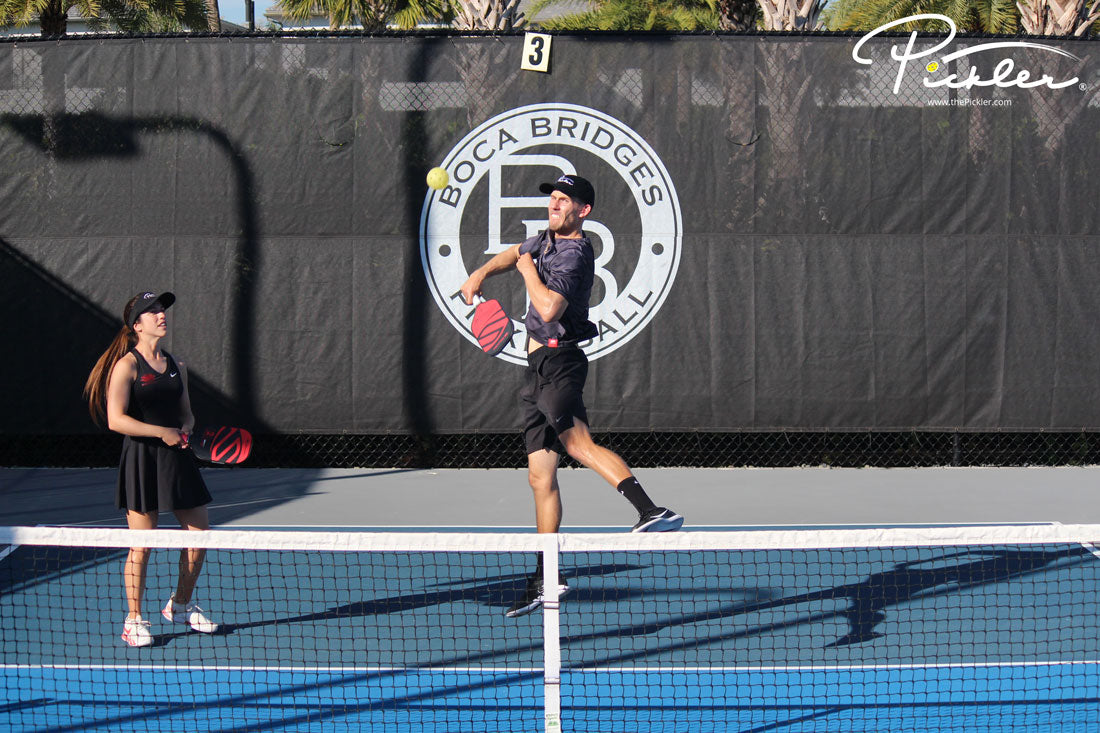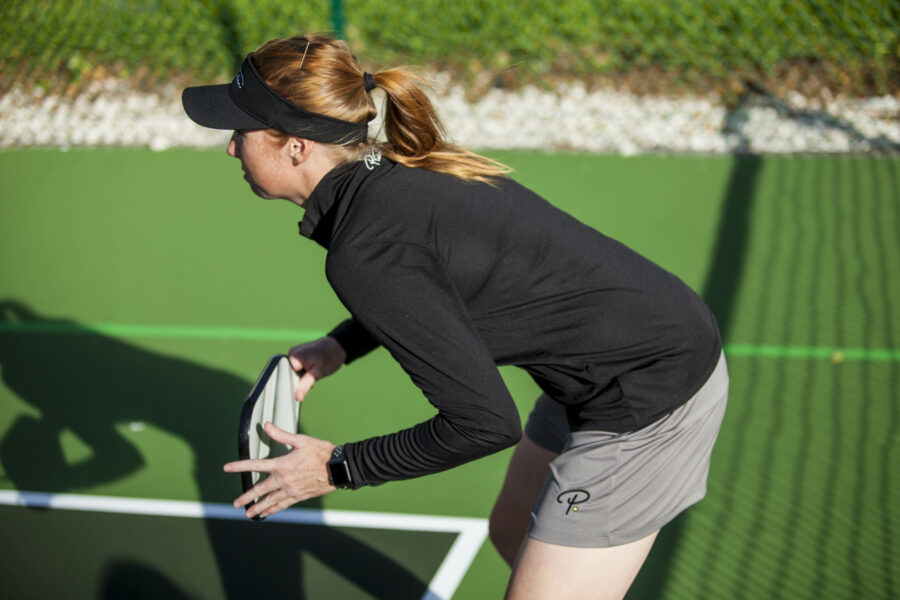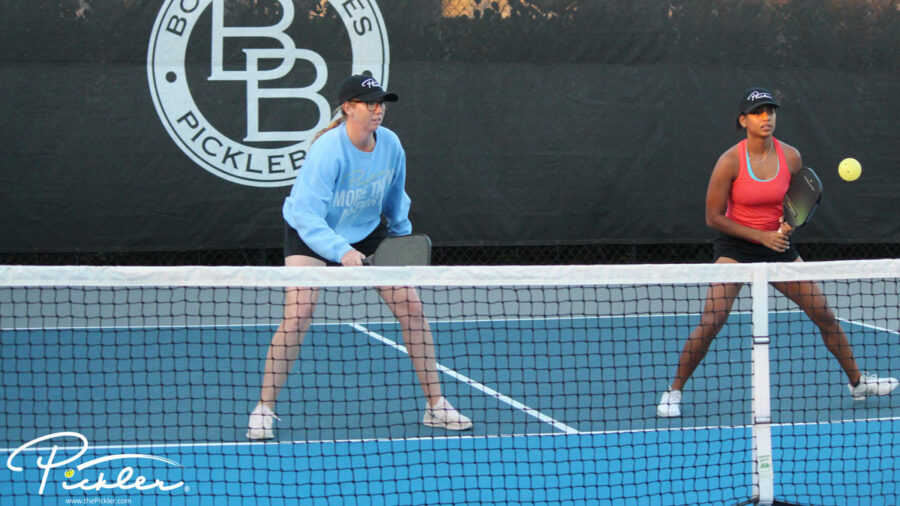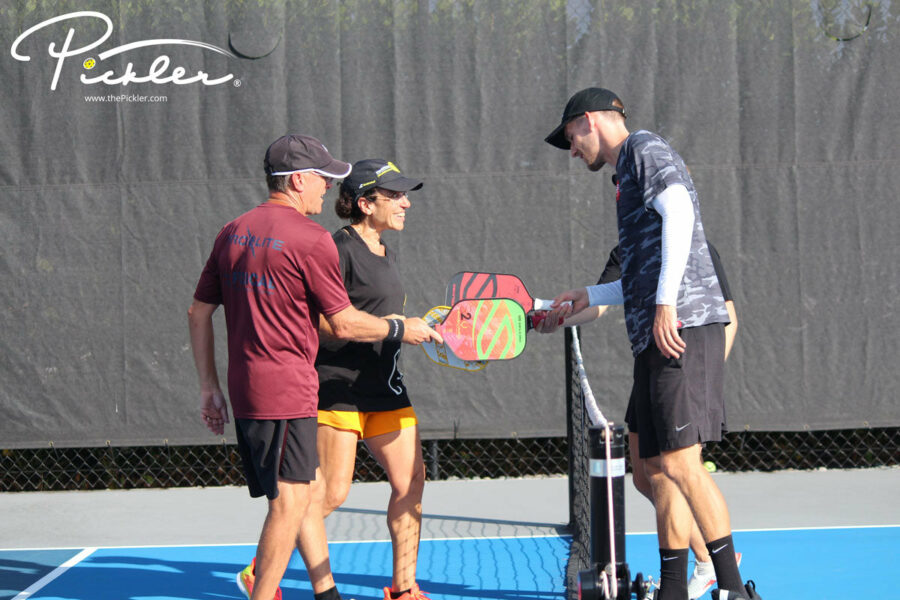When watching a doubles team play pickleball, it is easy to think that one player should stay on the right side of the court, while the other player should stay on the left side of the court, and neither player should cross the centerline. However, this thinking would be ill-advised. Rather, the player that can hit the best shot and apply the most pressure on the opponents should take the shot. So, sometimes, this means crossing the centerline and taking a shot on the opposite side, which is essentially a “poach.”
What Is Poaching in Pickleball?
A poach in pickleball is where a player crosses over the centerline of the court to hit a pickleball on his or her partner’s side of the court. Poaching typically results in a speed up or put away shot, as a poach is an aggressive move that can really put pressure on your opponents, if executed properly.
Why to Poach on the Pickleball Court
The poach is an important and effective shot and strategy in pickleball that can help you win more points because:
- Poaching allows the partner that can hit the best shot to take the shot;
- Poaching puts pressure on your opponents to hit a better, more quality shot, as poaching is generally only effective on higher balls from your opponents. If your opponents keep the pickleball low, you will have less chance and room to cross the centerline and hit an aggressive speed up or put away shot (and instead possibly deferring to a simple dink). However, if your opponents hit a pickleball that floats through the air, then a poach is easier and more effective;
- A poach cuts off your opponents’ angles, gives your opponents reduced reaction time (which you always want to take time away from your opponents), and generally throws your opponents off guard, as a poach generally is an aggressive move and not expected; and
- A poach gives your opponents a different “look” on the pickleball courts, which can keep them constantly guessing as to what you and your partner will do next. And, once you execute an effective poach, you can continue to keep your opponents guessing and feeling uncomfortable by even faking that you are going to do a poach.
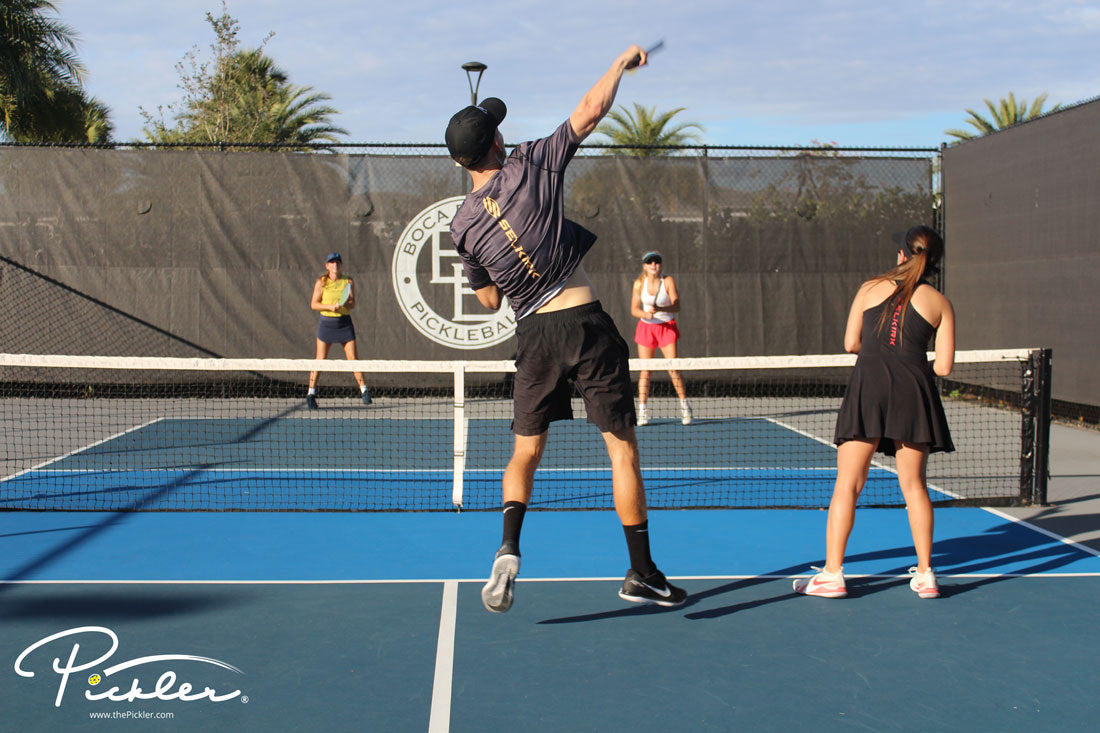
When to Poach to Win Points on the Pickleball Court
Although poaching is an effective shot and strategy on the pickleball court, there are certain circumstances where it is a good idea and can help you win points and there are certain circumstances where poaching is a poor idea and may lead to losing points.
For an effective poach (and winning points), try poaching in the following circumstances:
- Your opponents hit a floating pickleball into the air and either:
- Your partner is back at the baseline; or
- You have a stronger shot than your partner (for instance, the pickleball is to your forehand and your partner’s backhand);
- Your partner is being “picked on” by your opponents, and you need to help relieve some pressure on your partner;
- You and your partner are struggling and you need to give your opponents a different “look” to change the momentum of the game; or
- You and your partner are executing a “Shake and Bake.”
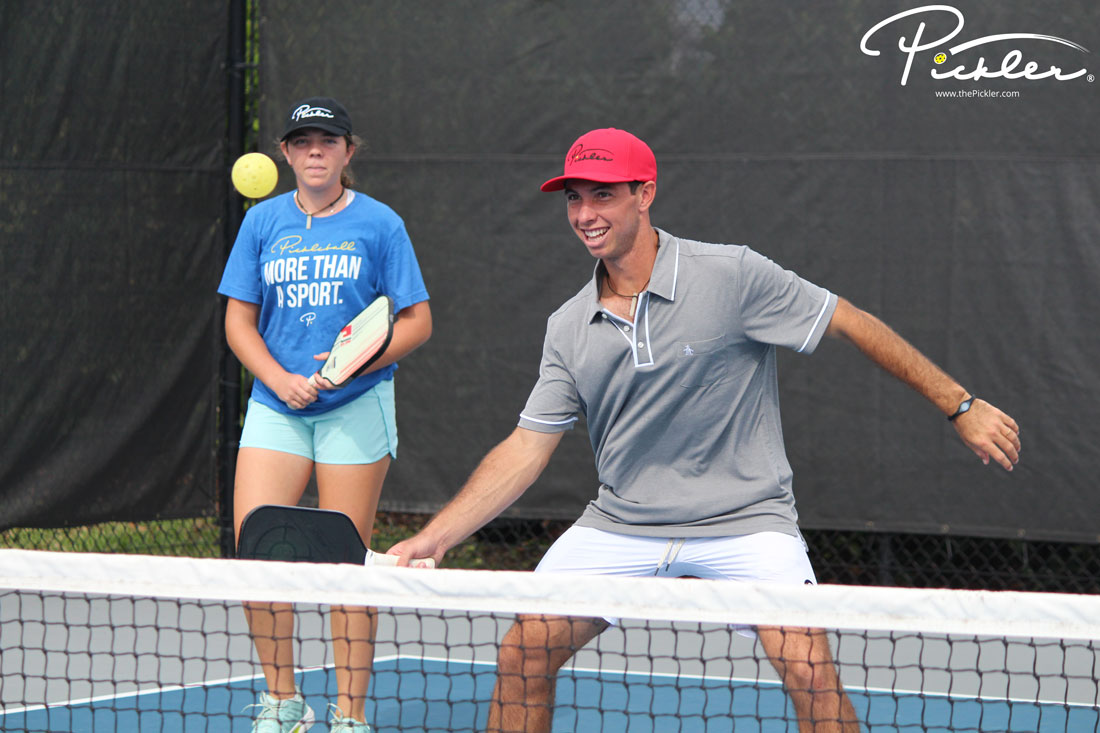
When Not to Poach in Pickleball
There are some circumstances where a poach may not be your best strategy on the pickleball court:
- If you are not able to put away the poach, then you may not want to poach your partner’s shot. This is particularly true if the attempted poach puts you out of position for the next shot. For instance, if you poach a shot, and you are now on your partner’s side of the pickleball court, you may be leaving half of the pickleball court open (your half), unless your partner is able to slide over.
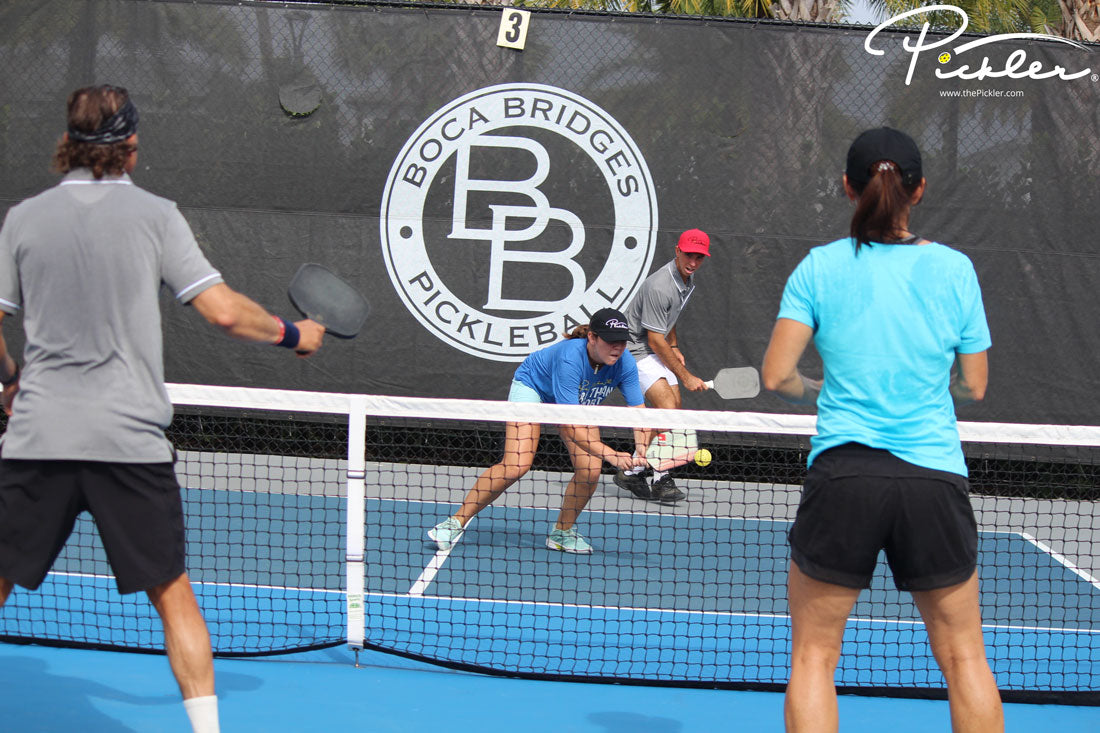
- If you are playing recreational play—as opposed to competitive play (e.g., a pickleball tournament)—then consider if and when a poach is appropriate. Some players in these settings do not appreciate the poach as much as in a competitive circumstance. For instance, are you in open play and playing players with a variety of skill levels (including some players with lower skill levels)? If so, then poaching may take away from the friendly game. This is especially true if you are unsuccessful with your poaches.
- If you partner is able to hit a better shot and apply more pressure than your poach. Remember, the goal with the poach is to hit a more offensive and aggressive shot to put pressure on your opponents. If your poach is not able to accomplish this (for instance, if you routinely are missing your poach shots or not putting away your poach), then it may not be the best shot to use on the pickleball court.
Pickleball Tips on How to Poach Successfully
If you are ready to poach and apply some pressure on the pickleball court, then be sure to use the following tips to win more points:
- Consider communicating your intention to poach if the opportunity presents itself to your partner before the point;
- Imagine you put your arms out at a 45-degree angle. Move along the imaginary line that your arms create. In other words, move along the “V,” which will help you generate momentum into your poach and cut off angles from your opponents;
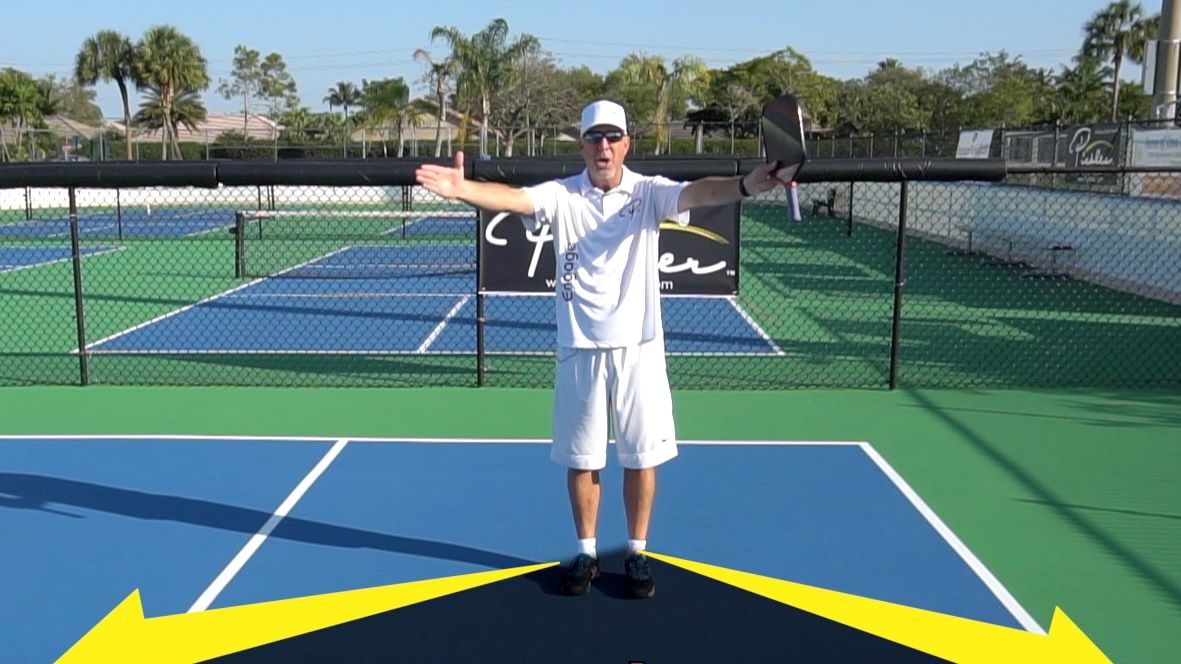
- Keep your shot short and compact by taking a small backswing and keeping your paddle out in front of you;
- Consider poaching more on your forehand side (rather than on your backhand side), as most players have more reach, more power, and more mobility on their forehand side;
- Always assume that the pickleball will be returned by your opponents. Assuming the pickleball will be returned, consider switching sides of the court with your partner in a poach situation in order to cover any open court space caused by the poaching player.
Lastly, be aware that, due to the open court space caused by the poaching player leaving his or her half of the court, it is imperative that the poach shot is a winner or otherwise puts your opponents on the defensive to keep the point alive. Further, by executing the poach, especially the first time (and especially early in the game), you and your partner will put fear into your opponents and constantly keep them guessing about what move you will make next, whether it be a poach, a fake poach, or no poach.

